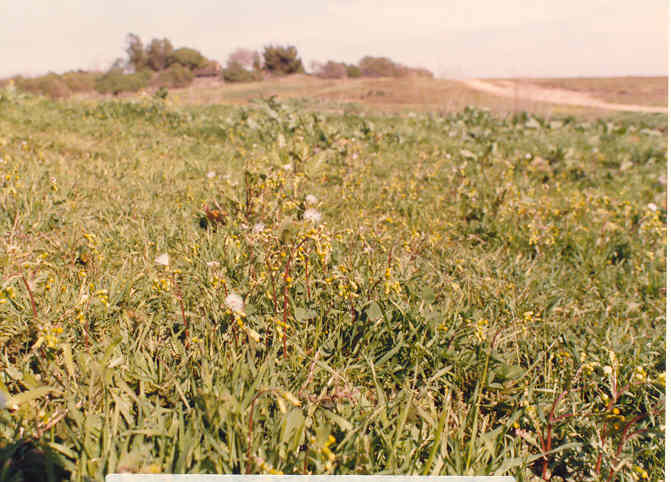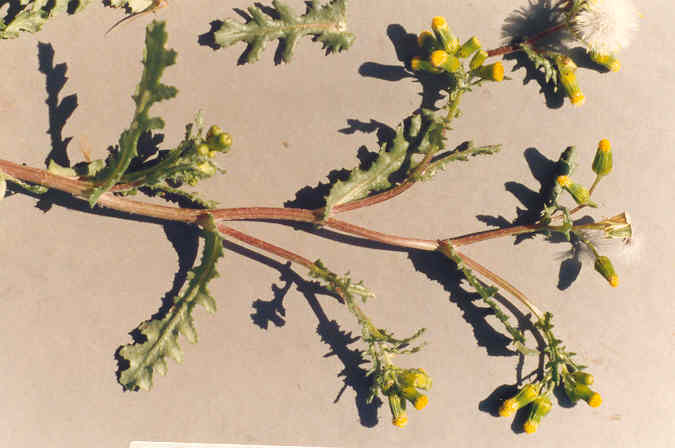
 |
Senecio vulgaris L.Asteraceae (Sunflower Family)EuropeCommon Groundsel |
February Photo
Plant Characteristics: Annual,
1-5 dm. high, leafy throughout, simple or branched from base, sparsely strigose
to glabrous; lvs. rather coarsely pinnatifid and then toothed or simply coarsely
toothed, ca. 3-10 cm. long, the lower petioled, the upper clasping; heads
discoid, the disk 5-10 mm. wide; rays lacking or very inconspicuous; disk-fls.,
less than 40, perfect, fertile; anthers entire to minutely sagittate; invol. ca.
5-8 mm. high; phyllaries mostly ca. 21 and black-tipped, often with smaller
bractlets at their base; aks.
strigulose-hirtellous; pappus of many usually white soft bristles.
Habitat:
Common weed in gardens and waste places, below 1500 m. Blooms most months.
Name: Latin, senex, old man, because of the white pappus.
Latin, vulgaris, common.
(Jaeger 283). The name
"groundsel" descends almost uncorrupted from the early Anglo-Saxons. They called the plant groundswelge,
meaning "earth-glutton" or "ground devourer."
(Hatfield 95).
General: Occasional in the
study area. There was a
large colony on the Santa Ana Heights bluffs that was mostly destroyed when the
horse and bike path was constructed in 1987.
Also found on North Star beach. Photographs
were taken on the Santa Ana Heights bluffs.
(my comments).
It is reported that the herbage is poisonous to some animals.
(Robbins et al. 495).
Senecio species have been known
to cause dermatitis. (Fuller 370).
This weed was once grown as a crop, principally as a food for pigs,
goats, rabbits, and poultry. Either
fresh or dried it was used in summer and winter, and its effects were both
wholesome and soothing. For the
plant contains a sufficient amount of iron and other mineral constituents to
remedy animals' feebleness and nervous disorders.
Large quantities of groundsel are sold to be enjoyed by canaries and
other caged birds; be careful of the doses however, as too much groundsel will
cause your pet to lose its feathers out of season.
In an herbal of Tudor times, the description of groundsel says:
"The flower of this herbe hath white hair, and when the winde
bloweth it away, then it appeareth like a bald-headed man."
This agrees with the plant's botanical name, which Pliny gave it.
A weak tea infused from the fresh weed is a mild laxative. (Hatfield
97-98). The
stems and leaves of Senecio spp.,
contain a poisonous substance and if eaten in quantity may cause liver damage.
(James 82). About
1000 species of very wide distribution. (Munz,
Flora So. Calif. 223).
Text Ref: Hickman, Ed. 342;
Munz, Flora So. Calif. 227; Roberts
13.
Photo Ref:
Feb 1 85 # 19A,20A.
Identity: by R. De Ruff, confirmed by F. Roberts.
Computer Ref: Plant Data 192.
Have plant specimen.
Last edit 10/21/02.
 |